Population
6,709 people
Number of residents
+502 people
+8% change since 2011
32 years
Median age
52% female, 48% male
Gender split
The ward's population has increased by 502 people in the past 10 years.
Females make up 52% of the total population compared to 48% of males.
The median age of the ward is 32. This is lower than both H&F (34) and London (35).
13% of the population is under 16, compared to 16% in H&F and 19% in London.
Working-age people account for 76% of the ward's population. This is higher than both H&F (75%) and London (70%).
The population aged 66+ years has increased by 7% in the past 10 years and now stands at 11% of the total population. This compares to 10% in H&F and 11% in London.
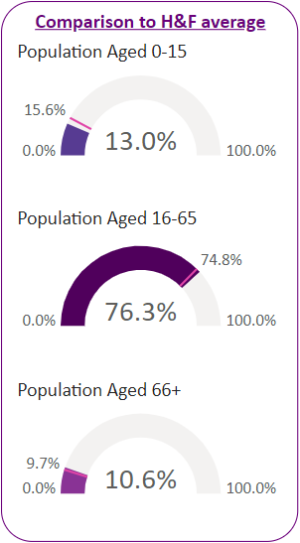
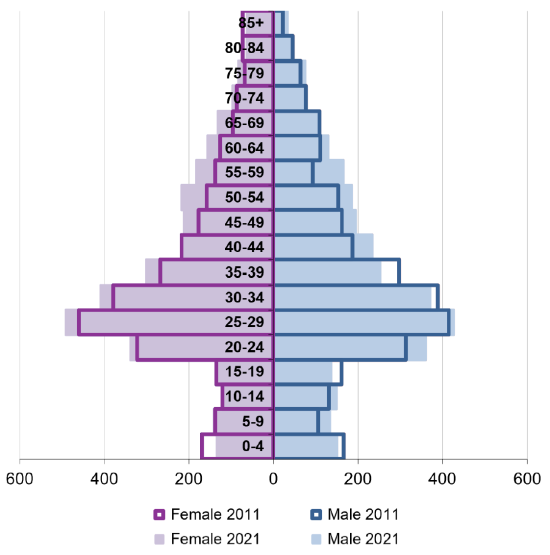
The population pyramid compares the 2021 age and gender breakdown with 2011. It is clear that the population in the ward is relatively young for both genders with a large proportion in the age range 20 to 34.
Lillie has a population density of 15,941 people per square km compared to 11,161 for H&F as a whole and 5,598 for London.
Diversity
40%
Ethnic minorities
49%
Foreign-born residents
18%
No English speakers
30%
No religion stated
28%
Non-UK identity
2.1
Household size (persons)
30%
Single adults (under 66)
12%
Lone parent households
The ward ranks 8th lowest on the proportion of the population describing themselves as White British (34%), and the 7th highest on the proportion of 'Other White' residents (24%).
The ward has a higher proportion of residents from ethnic minority backgrounds (40%) than the H&F overall average (37%), making it the 9th highest among all wards.
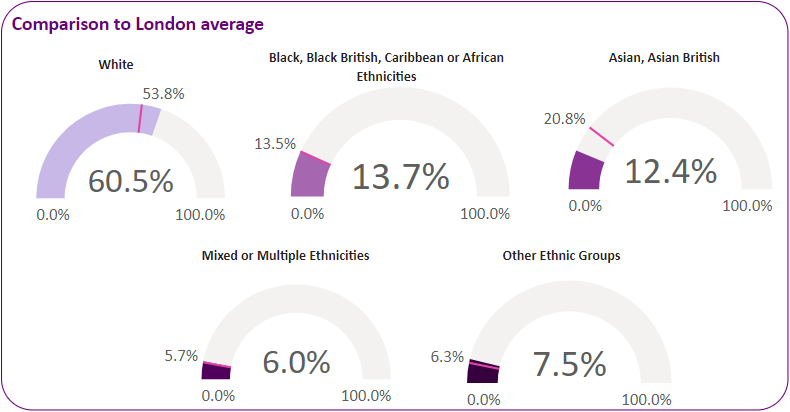
Foreign-born residents made up 49% of the ward population (46% in H&F).
A high proportion were born in:
- an EU country
- the Middle East or Asia
- Africa
- the Americas and the Caribbean
The ward has the 9th highest proportion (18%) of households with no adults who speak English as a first language.
The main foreign languages spoken in the ward are:
- Italian
- Spanish
- French
- Somali
- Arabic
- Persian (Farsi)
- Portuguese
28% of residents identify themselves as a category that refers to a non-UK national identity, ranking the 7th highest in H&F.
Christians remained the largest religious group in the ward with 45% of residents (46% in H&F). 13% of residents identified as Muslim (12% in H&F) while 30% stated they had no religion.
The average household size is 2.1 persons. This compares to 2.3 persons in H&F.
Single adult households aged under 66 are the largest group (30%). This compares to 27% in H&F.
In 2021, 596 households (19%) had dependent children. This compares to 23% in H&F and 31% in London.
The ward has proportionately equal lone-parent households (12%) than the borough average.
Health and disability
85%
have very good or good health
5%
have very bad or bad health
14%
are Disabled residents
6%
provide informal care
7% of females and 6% of males
are limted a lot
Life expectancy in the ward is worse for females and males than the London average.
Females are expected to live 81.6 years (the London average is 83.4 years) and males are expected to live 78.1 years (the London average is 78.8 years).
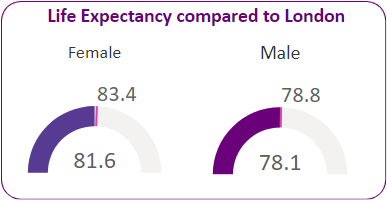
85% of residents declared themselves in good or very good health (87% in H&F and 85% in London).
14% (918 residents) reported having a long-term health problem or disability that limits their day-to-day activities. This is the 8th highest level among all wards (13% in H&F).
7% of females and 5% of males reported their day-to-day activities being limited a lot.
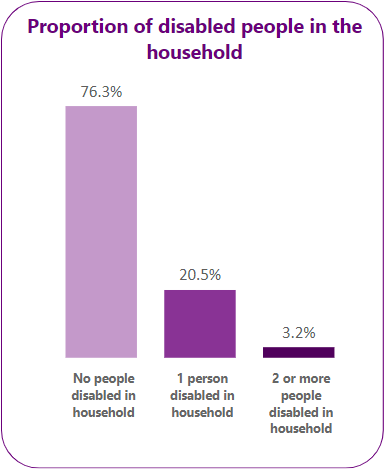
76% of households in the ward do not have a Disabled member, while 21% of households include 1 Disabled member and 3% include 2 or more Disabled people.
6% of the population provide informal care - this is the 7th highest proportion in the borough. 50% give less than 20 hours of care a week while 26% provide 50 or more hours.